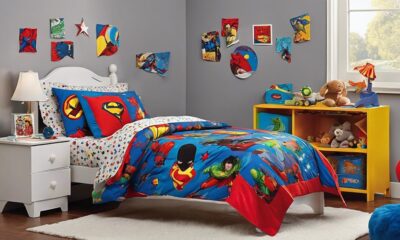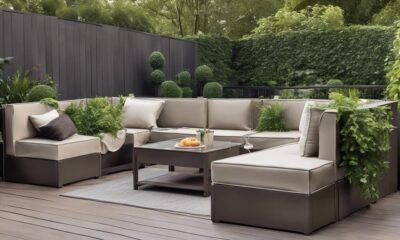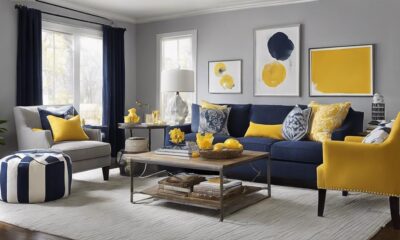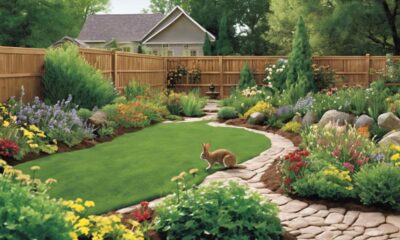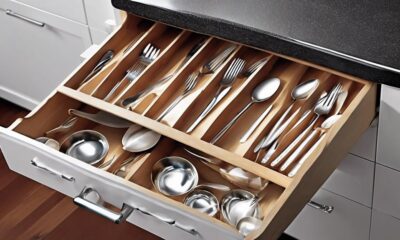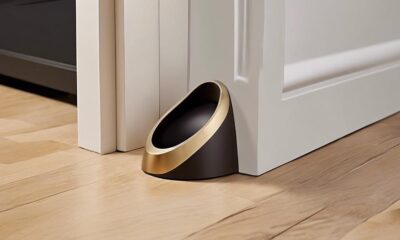Decor
Traditional Russian Decor Elements Explained
2025

Were you aware that the Russian culture boasts a profound and varied heritage of decorative crafts? Ranging from elaborate textiles and needlework to detailed wooden sculptures, their distinct aesthetic has fascinated individuals for generations.
In this article, I will delve into the world of Russian decor, exploring iconic Matryoshka dolls, imperial porcelain, and grand palaces.
Join me on this journey as we uncover the beauty and craftsmanship that Russians used to adorn their homes and lives.
Key Takeaways
- Traditional Russian decorative styles incorporate intricate patterns and vibrant colors, influenced by traditional Russian decorative motifs and folk art.
- Iconic Russian Matryoshka dolls originated in late 19th-century Russia and became popular worldwide, painted with vibrant colors and intricate designs.
- Ornate fabrics and embroidery are significant in traditional Russian clothing, with richly embroidered traditional costumes and intricate patterns inspired by nature, folklore, and religious motifs.
- Intricate wood carvings serve as a visual representation of Russian culture’s history, beliefs, and traditions, showcasing the skill and craftsmanship of artisans.
Traditional Russian Decorative Styles
Traditional Russian decor styles incorporate intricate patterns and vibrant colors. These styles are heavily influenced by traditional Russian decorative motifs and folk art. The motifs commonly used in Russian decor include floral patterns, geometric shapes, and ornate designs. These motifs are often found on various decorative items such as furniture, textiles, and ceramics.
The use of bold and contrasting colors is a characteristic feature of traditional Russian decor, with red, blue, and gold being the most prevalent. The intricate patterns and vibrant colors in traditional Russian decor reflect the rich cultural heritage and artistic traditions of Russia.
Now, let’s delve into the iconic Russian Matryoshka dolls, which are an integral part of Russian decor.
Iconic Russian Matryoshka Dolls
You’ll love the iconic Russian Matryoshka dolls that are used as decorative pieces. These dolls have a rich history and carry deep symbolism.
Matryoshka dolls, also known as nesting dolls, are made of wood and consist of multiple dolls stacked inside each other, with the smallest doll being the innermost. They originated in the late 19th century in Russia and quickly became popular worldwide. The dolls are often painted with vibrant colors and intricate designs, depicting various themes such as traditional Russian folklore, nature, or historical figures.
Each doll represents a different stage of life or a different character, symbolizing the unity and interconnectedness of generations. The matryoshka doll is not only a charming decorative item but also a reflection of Russian culture and tradition.
Transitioning into the subsequent section about ‘ornate fabrics and embroidery’, the use of vibrant colors and intricate designs seen on the matryoshka dolls is reminiscent of the elaborate craftsmanship found in traditional Russian textiles and embroidery.
Ornate Fabrics and Embroidery
Transitioning into the subsequent section about ‘ornate fabrics and embroidery’, the vibrant colors and intricate designs on the matryoshka dolls remind us of the beautiful craftsmanship found in traditional Russian textiles and embroidery.
When it comes to traditional Russian clothing, ornate fabrics and embroidery play a significant role in showcasing the rich cultural heritage of Russia. The Russian textile industry has a long history of producing exquisite fabrics and intricate embroidery, known for their detailed designs and vibrant colors.
Some key aspects of traditional Russian textiles and embroidery include:
- Richly embroidered traditional costumes, such as sarafans and kokoshniks
- Intricate patterns inspired by nature, folklore, and religious motifs
- The use of luxurious fabrics like silk, velvet, and brocade
These ornate fabrics and embroidery techniques not only add beauty and elegance to traditional Russian clothing but also reflect the skill and creativity of Russian artisans.
Transitioning into the subsequent section about ‘intricate wood carvings,’ the artistry and attention to detail in Russian textiles and embroidery are mirrored in the intricate woodwork seen in Russian decor.
Intricate Wood Carvings
As I delve into the world of intricate wood carvings, I am struck by their profound cultural significance. These carvings serve as a visual representation of a culture’s history, beliefs, and traditions, often depicting important figures, symbols, and stories.
Traditional carving techniques, passed down through generations, showcase the skill and craftsmanship of the artisans who bring these wooden masterpieces to life. Each region and culture has its own unique carved designs, characterized by intricate details, symbolic motifs, and distinct artistic styles, making them truly one-of-a-kind creations.
Cultural Significance of Carvings
If you visit Russia, you’ll notice that carvings hold significant cultural value. They are not just decorative pieces but have deep cultural interpretation and historical preservation significance. Here are three reasons why carvings are culturally significant in Russia:
-
Traditional symbolism: Carvings often depict symbols that hold cultural and historical significance. These symbols can represent various aspects of Russian culture, such as folklore, religious beliefs, or national identity.
-
Artistic expression: Carvings showcase the artistic skills of Russian artisans who carefully craft intricate designs and patterns. This art form has been passed down through generations, preserving traditional techniques and styles.
-
Historical preservation: Carvings serve as a visual representation of Russia’s rich history. They can be found in historical buildings, churches, and museums, preserving the cultural heritage and providing insights into the past.
Overall, carvings in Russia are more than just beautiful decorations; they are a means of cultural expression, historical preservation, and storytelling.
Traditional Carving Techniques
After exploring the cultural significance of carvings in Russian decor, it’s important to understand the traditional carving techniques that were utilized.
Traditional carving tools played a vital role in creating intricate designs on various surfaces. These tools included chisels, gouges, knives, and rasps. The craftsmen would carefully carve away layers of wood or stone to reveal beautiful patterns and shapes.
The techniques used in Russian carving were influenced by historical factors such as Byzantine art, Gothic architecture, and the ornate styles of the Baroque and Rococo periods. These influences can be seen in the intricate detailing and delicate motifs found in Russian carved decor.
With a deep understanding of the traditional carving techniques and historical influences, we can now delve into the unique carved designs that adorned Russian homes and buildings.
Unique Carved Designs
To truly appreciate the unique carved designs, take a closer look at the intricate patterns and delicate motifs found in Russian homes and buildings. These designs are a reflection of the rich cultural heritage of Russian folk art and the historical wooden architecture that has been passed down through generations.
Here are some key features of these unique carved designs:
-
Intricate floral patterns: Russian folk art is known for its beautiful floral motifs, often inspired by nature. These designs are meticulously carved into wooden panels, creating a stunning visual effect.
-
Symbolic motifs: Many of the carved designs in Russian architecture have symbolic meanings. For example, the sun symbolizes fertility and prosperity, while the tree of life represents the interconnectedness of all living beings.
-
Geometric patterns: Alongside the floral and symbolic motifs, geometric patterns also play a significant role in Russian carved designs. These patterns are often symmetrical and repetitive, adding a sense of harmony and balance to the overall design.
Imperial Russian Porcelain and Ceramics
Imperial Russian porcelain and ceramics were highly valued for their intricate designs and craftsmanship. These exquisite pieces were a symbol of luxury and prestige, often adorning the tables and cabinets of the Russian nobility.
The production of imperial porcelain began in the early 18th century, with the establishment of the Imperial Porcelain Factory in St. Petersburg. The factory produced a wide range of items, including dinnerware, vases, and figurines, all characterized by their meticulous attention to detail and high-quality materials.
Traditional ceramics, on the other hand, were crafted by skilled artisans using age-old techniques. These ceramics often featured hand-painted motifs inspired by Russian folk art and nature.
Both imperial porcelain and traditional ceramics played a significant role in Russian decorative arts, showcasing the country’s rich cultural heritage and artistic prowess.
Grand Russian Palaces and Architectural Marvels
The grand Russian palaces and architectural marvels are breathtaking examples of opulence and architectural brilliance. As I wander through these magnificent structures, the interiors never fail to captivate me with their ornate detailing and lavish decor. The famous Russian architects who crafted these spaces have left an indelible mark on the world of architecture.
Here are three sub-lists that highlight the key features of Russian palace interiors and the contributions of these renowned architects:
-
Intricate Ceiling Designs:
-
Elaborate frescoes and stuccowork adorn the ceilings, showcasing scenes from mythology and history.
-
Gold leaf accents and ornamental moldings add a sense of grandeur and opulence.
-
Crystal chandeliers illuminate these magnificent spaces, casting a dazzling glow on the intricate designs.
-
Richly Decorated Walls:
-
Gilded paneling and silk tapestries grace the walls, creating a regal atmosphere.
-
Exquisite paintings by renowned artists adorn the halls, depicting important historical events and portraits of the royal family.
-
Mirrors strategically placed to reflect the beauty of the surroundings and create an illusion of spaciousness.
-
Luxurious Furnishings:
-
Plush velvet upholstery and embroidered fabrics cover the furniture, exuding elegance and comfort.
-
Hand-carved wooden furniture, adorned with intricate detailing, adds a touch of sophistication.
-
Persian rugs and marble flooring complete the opulent ambiance, providing a luxurious underfoot experience.
These Russian palace interiors, designed by famous Russian architects, are a testament to the rich cultural heritage and artistic prowess of the country. They continue to inspire awe and admiration, showcasing the grandeur of the Russian imperial era.
Frequently Asked Questions
What Are Some Common Elements Found in Traditional Russian Decorative Styles?
In traditional Russian decorative styles, you will find elements inspired by Russian folk art and traditional Russian architecture. These include intricate wood carvings, vibrant colors, floral motifs, and ornate patterns.
How Are Matryoshka Dolls Made and What Is Their Significance in Russian Culture?
Matryoshka dolls, a symbol of Russian culture, hold great significance. Crafted using a variety of techniques and materials, these nesting dolls are not only decorative, but also represent the concept of family and the unity of generations.
What Are Some Popular Motifs and Patterns Used in Russian Fabrics and Embroidery?
Popular motifs in Russian fabrics and embroidery include floral patterns, geometric designs, and traditional Russian decorative styles. These motifs are commonly used to adorn clothing, home decor, and accessories, adding a touch of cultural heritage to the overall aesthetic.
How Is the Process of Creating Intricate Wood Carvings in Russia?
The process of creating intricate wood carvings in Russia involves various techniques such as chip carving and relief carving. These carvings are commonly used for decorative purposes and can be found in furniture, architectural elements, and religious icons.
What Are Some Notable Examples of Imperial Russian Porcelain and Ceramics and What Makes Them Unique?
Imperial Russian porcelain, such as the famous Fabergé eggs, and intricately painted ceramics are notable examples of Russian decor. Matryoshka dolls, with their nesting design, are also a unique and popular decorative item.
How Can Backlighting be Incorporated into Traditional Russian Decor?
Incorporating backlighting in decor concept to traditional Russian decor can add a modern touch. Install LED strips behind intricate wood carvings or ornate icons to create a warm, inviting glow. Use diffused lighting to highlight traditional textiles like matryoshka dolls or samovars, bringing attention to their intricate details.
How Can Traditional Russian Decor Elements be Incorporated into Tokyo Ghouls Decor?
Traditional Russian decor elements such as intricate wood carvings, ornate paintings, and vibrant textiles can be incorporated into Tokyo ghouls decor ideas to create a unique fusion of styles. Adding Matryoshka dolls, samovars, and folk art motifs can bring an intriguing juxtaposition to the overall design scheme.
How Are Traditional Russian Decor Elements Different from Traditional Italian and Spanish Decorations?
When comparing traditional Russian decor elements to traditional Italian and Spanish decorations, it’s apparent that each culture embraces unique styles. Russian decor often incorporates intricate patterns and bold colors, while traditional Italian and Spanish decorations ideas favor a mix of warm earth tones and ornate details.
Conclusion
In conclusion, it’s fascinating to discover the various decorative styles that Russians have used throughout history. From the iconic Matryoshka dolls to the intricate wood carvings and ornate fabrics, Russian decor is rich in tradition and artistry.
The use of Imperial Russian porcelain and ceramics adds a touch of elegance to any space. And let’s not forget the grand Russian palaces and architectural marvels that continue to awe and inspire.
Coincidentally, exploring Russian decor feels like stepping into a world of beauty and craftsmanship.
- About the Author
- Latest Posts
Introducing Charles, the Editor in Chief at ByRetreat, whose passion for interior design and editorial excellence elevates every remote workspace to new heights. With his keen eye for detail, impeccable taste, and expertise in design, Charles brings a wealth of knowledge and creativity to the ByRetreat team.
As the Editor in Chief of a renowned lifestyle blog, Charles has honed his skills in curating captivating content and staying up-to-date with the latest trends in interior design. His deep understanding of aesthetics and the power of storytelling through design enables him to create remote workspaces that are not only visually stunning but also rich in personality and meaning.
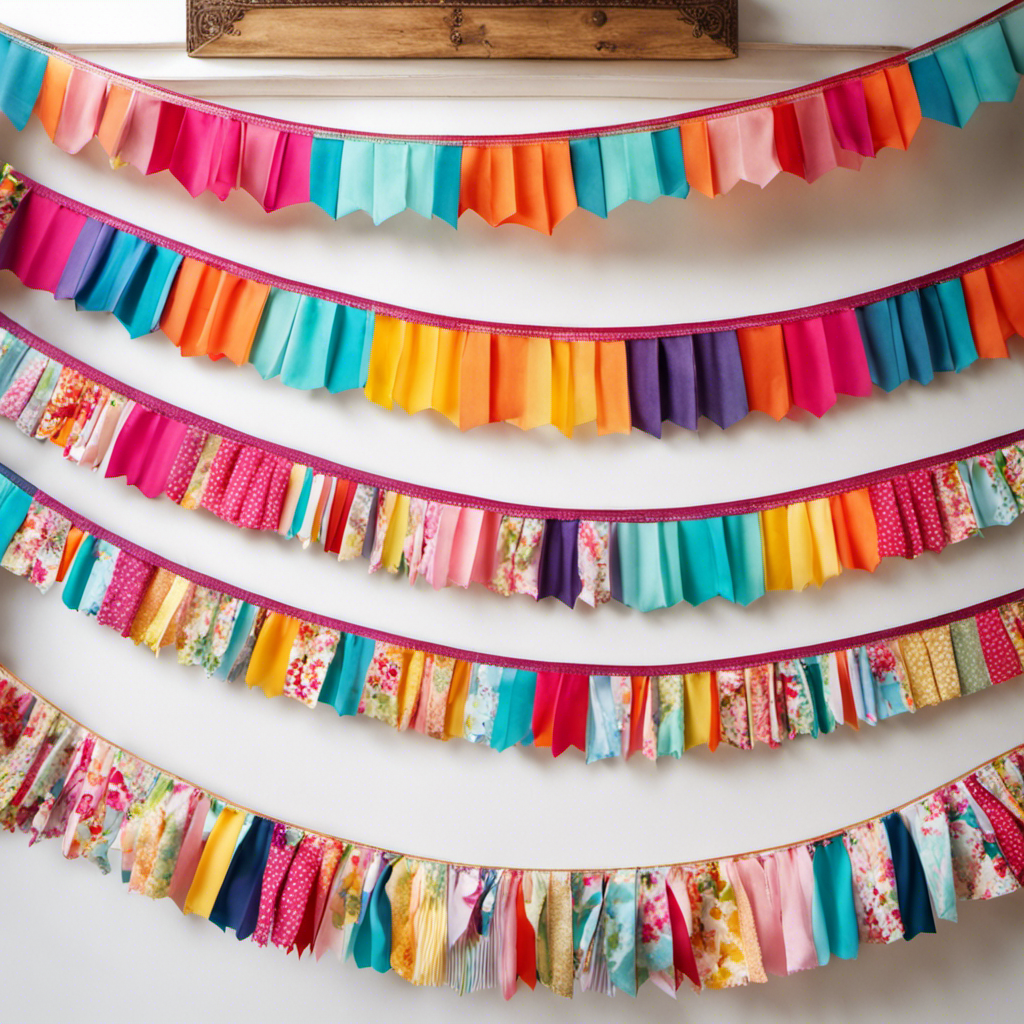
Stepping into a room decorated with colorful bunting fills me with happiness. The fluttering flags, each symbolizing a special occasion or memory, give the space a magical feel that lifts my mood instantly.
Bunting decor is more than just a decorative element; it is a symbol of festivity and a testament to our desire to celebrate life’s milestones. In this article, I will delve into the history, types, and endless possibilities of bunting decor, as well as provide DIY ideas and tips for making it a part of any occasion or setting.
Key Takeaways
- Bunting decor has a rich history and is used worldwide to celebrate special occasions and mark important events.
- Bunting decor can be made from various materials such as fabric and paper, and can be customized to fit personal style and event themes.
- Bunting decor adds a festive touch to any space and can be used as table runners, backdrops, or draped along staircases.
- Proper care and maintenance, such as storing in a cool, dry place and avoiding direct sunlight, will ensure the longevity and fresh appearance of bunting decor.
History of Bunting Decor
You’re probably wondering about the history of bunting decor. Well, let me take you on a journey through time.
Bunting decor has evolved over the years, from its humble beginnings as simple fabric strips to the elaborate designs we see today. Its cultural significance cannot be overstated. In many cultures, bunting decor is used to celebrate special occasions and mark important events. This festive adornment has become a universal symbol of joy and unity, hanging proudly at weddings, festivals, and even political rallies. For those wondering what is decor, bunting serves as a striking example of how simple materials can transform a space and evoke emotion. Its vibrant colors and patterns not only enhance the atmosphere but also tell a story of tradition and celebration.
From weddings to birthdays, bunting decor adds a festive touch to any gathering. The colors and patterns used in bunting decor often hold symbolic meanings, representing joy, luck, or prosperity. It’s fascinating to see how this art form has evolved and how it continues to be an integral part of celebrations around the world.
Now, let’s move on to explore the different types of bunting decor.
Types of Bunting Decor
There are various types of bunting that you can use to add a festive touch to your space. When it comes to different bunting styles, the possibilities are endless. Here are a few ideas to spark your imagination:
- Pennant bunting: This classic style consists of triangular flags strung together, creating a whimsical and playful atmosphere.
- Fabric bunting: Made from colorful fabrics, this type of bunting adds a soft and cozy vibe to any room.
- Paper bunting: Perfect for parties and celebrations, paper bunting comes in a variety of colors and patterns, adding a pop of excitement.
If you’re looking to enhance a kids’ room, bunting decor is a fantastic choice. It can bring a sense of joy and wonder to their space, whether it’s in the form of cute animal shapes or their favorite cartoon characters. So why wait? Let your creativity soar and transform any room into a magical haven.
Now, let’s dive into the materials used in bunting decor.
Materials Used in Bunting Decor
To create a beautiful bunting, all you need is some fabric, scissors, and a sewing machine. Bunting decor has become increasingly popular in recent years, with people finding creative ways to incorporate it into their homes and events.
When it comes to materials used in bunting decor, the possibilities are endless. From cotton and linen to burlap and lace, the choice of fabric can greatly influence the overall look and feel of the bunting. Some people even opt for unconventional materials like paper or felt to add a unique touch. As for trends, natural and earthy tones are currently in vogue, with many individuals opting for sustainable and eco-friendly materials. These choices not only add beauty and charm to any space but also promote a more environmentally conscious lifestyle.
Transitioning into the next section, let’s explore some popular themes for bunting decor.
Popular Themes for Bunting Decor
When it comes to bunting decor, two key points that deserve attention are seasonal bunting designs and customizable bunting designs.
Seasonal bunting decor allows you to easily switch up the look of your space to match the time of year, whether it’s vibrant spring colors or cozy autumn tones.
On the other hand, customizable bunting designs give you the freedom to create a unique and personalized look that perfectly fits your style and preferences.
Let’s dive into these exciting aspects of bunting decor and discover the endless possibilities they offer.
Seasonal Bunting Decor
Seasonal bunting decor adds a festive touch to any space. When I think of seasonal bunting decor, I imagine vibrant colors and whimsical designs that instantly transform a room.
Picture a cozy living room adorned with fall-inspired bunting, featuring leaves in shades of red, orange, and yellow, gently swaying in the breeze. Or envision a backyard party with summer-themed bunting, showcasing bright sunflowers and fluttering butterflies.
And let’s not forget about the winter wonderland created by snowflake bunting, hanging delicately above a fireplace mantle. Seasonal bunting decor is the perfect way to set the mood and bring a sense of celebration to any occasion.
Now, let’s dive into the world of customizable bunting designs, where the possibilities are endless.
Customizable Bunting Designs
Let’s explore the endless possibilities of customizable bunting designs. With customizable bunting templates and unique bunting patterns, you can create a truly one-of-a-kind decoration for any occasion.
The beauty of customizable bunting designs lies in the ability to tailor them to fit your personal style and event theme. Whether you prefer a rustic, vintage look or a modern, sleek design, the options are limitless. You can choose from a wide range of colors, patterns, and materials to bring your vision to life.
Add a touch of personalization by incorporating names, initials, or special dates into the design. The versatility of customizable bunting designs allows you to create stunning decor that reflects your individuality and sets the perfect ambiance for your event.
Now, let’s dive into some creative DIY bunting decor ideas.
DIY Bunting Decor Ideas
When it comes to bunting decor, the possibilities are endless! I have always loved exploring creative designs for bunting. Whether it’s for a birthday party, a wedding, or just to add a touch of whimsy to my home. The best part is that there are plenty of affordable DIY options out there, so you don’t have to break the bank to create your own unique bunting.
Creative Bunting Design
You can create unique bunting designs using various materials and patterns. Here are some ideas to inspire your creativity:
-
Materials:
-
Vibrant colored fabrics that catch the eye
-
Shimmering ribbons for an elegant touch
-
Recycled paper for an eco-friendly design
-
Color Schemes:
-
Pastel shades for a soft and dreamy atmosphere
-
Bold and contrasting colors for a vibrant and energetic feel
-
Monochromatic tones for a sophisticated and modern look
-
Patterns:
-
Polka dots for a playful and whimsical vibe
-
Stripes for a classic and timeless design
-
Floral prints for a fresh and feminine touch
With these bunting color schemes and unique bunting patterns, you can create a visually stunning and personalized decoration for any occasion.
Now, let’s dive into some affordable DIY options that will bring your bunting designs to life.
Affordable DIY Options
To save money, try using materials that are readily available in your home for your DIY bunting project. There are plenty of budget-friendly options you can explore to create beautiful bunting without breaking the bank. Let me walk you through a step-by-step tutorial using common household items:
| Material | Description | Alternative |
|---|---|---|
| Scrap Fabric | Cut old clothes or bed sheets into triangles | Scrap Wrapping Paper |
| Twine or Ribbon | String the fabric triangles onto twine or ribbon | Yarn or String |
| Glue or Sewing Kit | Attach the fabric triangles to the twine/ribbon | Tape or Safety Pins |
Bunting for Any Occasion
For any occasion, there are endless possibilities when it comes to creating festive bunting using common household items. Bunting adds a touch of whimsy and charm to any space, making it the perfect decoration for weddings and baby showers.
Imagine delicate lace bunting, fluttering in the gentle breeze, as the bride walks down the aisle. Or vibrant, colorful bunting, hung above a dessert table, creating a joyful atmosphere for a baby shower celebration.
With just a few simple materials like fabric, paper, and string, you can easily create custom bunting that matches the theme and color scheme of your event. So whether you’re planning a romantic wedding or a sweet baby shower, bunting is the perfect way to add a festive touch to your special day.
Now let’s explore the different ways to use bunting decor in various settings.
Ways to Use Bunting Decor in Different Settings
When planning a party, consider using bunting decor to add a festive touch to various settings. Bunting comes in different styles, making it versatile for any occasion.
Whether you’re hosting a casual backyard gathering or an elegant indoor event, bunting can transform the space into a vibrant and celebratory atmosphere. Hang colorful flags on a string across the patio to create a cheerful ambiance for a summer barbecue. Or, drape delicate fabric bunting along the staircase railing for an elegant touch at a formal dinner party.
You can even get creative and use bunting as table runners or as backdrops for photo booths. The possibilities are endless, and each unique bunting display will add a special touch to your event.
As we delve into bunting decor for special occasions, let’s explore even more creative ways to incorporate this festive decoration.
Bunting Decor for Special Occasions
As we explore bunting decor for special occasions, let’s discover even more creative ways to incorporate this festive decoration. Whether it’s for weddings or baby showers, bunting adds a touch of whimsy and charm to any celebration.
Imagine walking into a beautifully decorated wedding venue, with delicate lace bunting hanging from the ceiling, gently swaying in the breeze. Or picture a baby shower adorned with colorful fabric bunting, creating a playful atmosphere for welcoming the little one.
Bunting can also be used to create a focal point, such as a backdrop for a photo booth or as a decorative element on tables. Its versatility allows you to customize the look and feel of your event, making it truly unique.
Now, let’s move on to some tips for caring and maintaining bunting decor.
Tips for Caring and Maintaining Bunting Decor
Taking proper care of your bunting decorations will ensure their longevity and keep them looking fresh for future celebrations. As someone who loves to decorate, I’ve learned a few caring tips and maintenance tips that have helped me keep my bunting decor in pristine condition. Here are some strategies I swear by:
| Caring Tips | Maintenance Tips |
|---|---|
| Store bunting in a cool, dry place | Check for any loose threads or fraying |
| Avoid exposing bunting to direct sunlight for long periods | Gently hand wash or spot clean as needed |
| Fold bunting neatly when storing | Iron on a low setting if necessary |
| Use gentle detergents that won’t fade the colors | Hang bunting to air dry |
Frequently Asked Questions
Where Can I Purchase Bunting Decor?
I love finding different types of bunting decor for parties! It adds a festive touch to any theme. You can purchase bunting decor at party supply stores or online retailers.
Can Bunting Decor Be Used Outdoors?
Bunting decor can add charm to outdoor spaces. I once used weather-resistant bunting to create a festive atmosphere for a backyard party. Hang it on fences, trees, or pergolas for a whimsical touch.
How Do I Hang Bunting Decor?
To hang bunting decor, start by gathering materials like string, scissors, and bunting flags made from fabric or paper. Cut the string to your desired length and tie each flag onto it. Hang the string using hooks or tape.
Can Bunting Decor Be Customized?
Yes, bunting decor can be customized to fit any occasion or theme. The pros of customized bunting include personalization and uniqueness, while the cons may be the additional cost and time required for customization.
Is Bunting Decor Reusable?
Yes, bunting decor can be reused if it is made from durable materials. It’s a great option for eco-friendly decorations. Plus, it can be easily washed and stored for future use, making it a practical choice.
Conclusion
In conclusion, bunting decor is a versatile and charming way to add a touch of whimsy to any setting. Whether it’s a historical celebration or a backyard barbecue, bunting decor is the perfect addition to create a festive atmosphere.
With a wide variety of materials and themes to choose from, there are endless possibilities to express your creativity. So remember, as the old saying goes, ‘A little bunting goes a long way!’ Let your imagination soar and have fun with this delightful form of decoration.
- About the Author
- Latest Posts
Meet Katherine, the creative enthusiast at ByRetreat who infuses her boundless passion for design into every remote workspace she crafts. With an innate sense of creativity and an eye for unconventional beauty, Katherine brings a unique and inspiring perspective to the team.
Katherine’s love for design is infectious, and her ability to think outside the box sets her apart. She believes that true artistry lies in embracing a variety of styles and mixing them harmoniously to create captivating spaces. By combining different textures, colors, and patterns, Katherine weaves a tapestry of creativity that breathes life into each remote workspace.
Architecture Home Styles
10 Steps to Expand Your High Ranch Home
Uncover the secrets to transforming your high ranch home into a spacious haven with these essential steps.

Expanding our high ranch home in ten easy steps may seem like a daunting task, but the benefits are definitely worth it. From redesigning our space to optimizing functionality, each step is crucial in changing our living space.
With careful planning and attention to detail, we can unlock the full potential of our high ranch home. So, let's embark on this journey together and discover how to create a space that truly reflects our lifestyle and preferences.
Key Takeaways
- Assess current space and needs, set objectives, and establish a budget.
- Customize layout for functionality, consider second stories or side extensions.
- Plan for energy efficiency and compliance with regulations during construction.
- Enhance property value with outdoor living spaces and landscaping features.
Assess Current Space and Needs
Let's dive into exploring your current living space and needs to kickstart the expansion journey. Assessing your house and room layouts is the first step towards planning a seamless addition. By understanding how you utilize your existing space, we can pinpoint areas that require improvement and expansion. Evaluating square footage allows us to determine the best way to maximize your living space efficiently.
Examining the layout of each room helps in identifying key areas for enhancement. Whether it's adding an extra bedroom, expanding the kitchen, or creating a cozy home office, we tailor the approach to suit your specific needs. A detailed floor plan acts as a blueprint, guiding us through the expansion process with precision and ensuring every inch of space is utilized effectively.
With a keen eye on your current space and needs, we pave the way for a successful house expansion that aligns perfectly with your lifestyle and aspirations.
Set Expansion Goals and Budget

Assessing our current living space and needs has laid the foundation for setting clear expansion goals and establishing a realistic budget for our high ranch home. When looking to expand a ranch house, it's essential to determine specific objectives such as adding extra bedrooms, creating more living space, or enhancing functionality. One exciting idea to consider is adding a second story to maximize vertical space and increase the overall square footage of your home. By setting precise goals, we can ensure that our expansion project aligns with our vision for the high ranch house.
To achieve a successful expansion, it's crucial to establish a realistic budget that accounts for the scope of work, materials, and labor costs involved. Researching the average costs of similar high ranch home expansions in your area can provide valuable insights into the financial investment required. Consider consulting with a professional contractor or architect to help develop a detailed plan and accurate cost estimates. Factor in additional expenses such as permits, inspections, and unexpected issues to avoid financial strain during the expansion project. With careful planning and a well-defined budget, we can turn our Home Addition Ideas into a reality.
Research Zoning and Permit Requirements
Let's begin by understanding the crucial aspects of checking local zoning laws, obtaining necessary permits, and following building regulations when expanding your high ranch home.
Researching zoning requirements ensures that your expansion plans align with the law, while securing permits is vital to avoid legal complications.
Check Local Zoning Laws
Researching local zoning laws is crucial before embarking on any expansion plans for your high ranch home. Understanding the zoning regulations and permit requirements specific to your area is essential to avoid costly fines and delays.
Zoning laws typically cover aspects such as setback requirements, maximum building heights, and property line considerations that could impact your expansion project. By familiarizing yourself with these regulations, you can effectively plan your high ranch home expansion.
Failure to comply with zoning laws can not only disrupt your project but also lead to legal issues. Therefore, take the time to research and comprehend the local zoning laws to ensure a smooth and successful expansion process for your high ranch home.
Obtain Necessary Permits
Before we begin the exciting journey of expanding your high ranch home, it's imperative to thoroughly understand and comply with the local zoning laws and permit requirements in your area. As we delve into this crucial step, let's ensure we're on the right track by following these key points:
- Research the specific zoning laws that apply to your property.
- Contact the local building department to inquire about necessary permits.
- Familiarize yourself with the permit application process and required documentation.
- Stay updated on any zoning changes that may impact your expansion plans.
- Remember, obtaining permits isn't just a formality; it's a vital step to ensure a smooth and legal expansion process.
Follow Building Regulations
As we embark on expanding your high ranch home, ensuring compliance with local zoning laws and permit requirements is paramount for a successful project execution. Researching zoning regulations before starting any construction is crucial to understand what's permissible in your area. Zoning laws outline how your property can be used and what type of structures can be built, ensuring harmony within the neighborhood.
Obtaining the necessary building permits is equally vital, as they guarantee that your expansion meets safety and building codes. Failure to adhere to these regulations can result in fines, delays, or even the halting of your project. By following zoning regulations and obtaining the required permits, you pave the way for a smooth and efficient high ranch home expansion.
Design New Layout and Floor Plan

Let's reimagine the layout of our high ranch home to maximize room functionality and enhance traffic flow.
By incorporating open floor plans, we can create a spacious and inviting atmosphere throughout the house.
Customizing the floor plan allows us to tailor our living spaces to suit our unique needs and preferences.
Room Functionality
Enhance the functionality of your high ranch home by crafting a new layout and floor plan that maximizes usability and comfort through multi-functional spaces and thoughtful traffic flow considerations. When adding living spaces and reimagining your floor plan, consider the following:
- Create versatile rooms that can serve multiple purposes.
- Incorporate built-in storage solutions to optimize space usage.
- Design open-concept areas for a seamless flow between rooms.
- Utilize natural light and strategic lighting fixtures to enhance ambiance.
- Include designated areas for relaxation, work, and socializing to cater to different needs within the household.
Traffic Flow
Craft a dynamic floor plan that effortlessly guides movement throughout your high ranch home, optimizing traffic flow for a seamless living experience. By creating open spaces and clear pathways, you can enhance the flow between key areas such as the living area, bedrooms, and bathrooms.
Minimize congestion in high traffic zones like hallways and entryways to ensure easy accessibility. Consider incorporating design elements that promote a natural circulation pattern, allowing for a comfortable and efficient living experience.
Focus on connecting different sections of the house in a way that encourages movement and interaction. With a well-thought-out layout that prioritizes traffic flow, you can transform your high ranch home into a functional and stylish space that meets your innovative living needs.
Consider Second-Story Addition

Considering a second-story addition for your high ranch home can significantly expand your living space and enhance its overall value. Adding a second floor is a fantastic way to add square footage to your high ranch home without encroaching on precious yard space. Here are some key points to keep in mind when considering this type of expansion:
- Doubling Living Space: Adding a second story can effectively double the living space available in your high ranch home, providing ample room for various activities.
- Design Integration: Careful consideration of the roof line and design integration is crucial for achieving a seamless and aesthetically pleasing look.
- Enhanced Curb Appeal: A well-executed second-story addition can maintain the structural integrity of the home while enhancing its overall curb appeal and value.
- Additional Functionality: With a second floor, you have the opportunity to create additional bedrooms, living spaces, or play areas, offering versatility and functionality.
- Maintaining Single-Story Design: Enjoy the benefits of added space without sacrificing the unique design elements that make high ranch homes so appealing.
Explore Horizontal Expansion Options

Let's kick off the discussion on horizontal expansion options for your high ranch home!
We'll be talking about considerations for side extensions, making strategic room layout adjustments, and navigating permits and regulations.
These points are essential for seamlessly integrating new living spaces while maintaining the charm and functionality of your home.
Side Extension Considerations
When expanding your high ranch home through side extensions, we can seamlessly integrate new living spaces while preserving the original structure's integrity. Side extensions offer a creative solution to add extra room without sacrificing the charm of ranch-style homes. Here are some considerations for your side extension project:
- Maximizing Space: Utilize the side extension to add new bedrooms, expand living areas, or create a dedicated playroom.
- Design Harmony: Ensure a cohesive design that blends the existing house with the new extension for a seamless transition.
- Outdoor Potential: Side extensions are ideal for high ranch homes with ample outdoor space, providing room for horizontal expansion.
- Functionality Boost: Horizontal expansions enhance the functionality of your home, catering to the needs of growing families.
- Innovative Solutions: Explore innovative ways to make the most of your side extension, creating a stylish and functional living space.
Room Layout Adjustments
To enhance the living space in your high ranch home, we can explore various horizontal expansion options to adjust room layouts creatively. By expanding the living room, you can create a more spacious and inviting area for entertaining guests or relaxing with your family.
Adding an extra bedroom can accommodate a growing family or provide a comfortable guest room. For those in need of a dedicated workspace, transforming a room into a home office offers a quiet and productive environment.
These adjustments not only increase the functionality of your home but also add a touch of modernity and style. Horizontal expansions seamlessly integrate with existing spaces, allowing for a cohesive and harmonious flow throughout your high ranch home.
Permits and Regulations
Researching local building codes and regulations is essential before embarking on any horizontal expansion project for your high ranch home. Understanding the permits and regulations involved in the expansion process is crucial to ensure a smooth and successful project.
Here are some key points to consider:
- Obtain necessary permits before starting any construction to avoid legal issues.
- Determine property line setbacks and zoning restrictions that may affect the expansion.
- Hiring a professional architect or contractor can help navigate the permit and regulation process effectively.
- Compliance with regulations can help in planning the expansion to maximize space while adhering to legal requirements.
- Stay informed about any updates or changes in regulations that may impact your expansion plans.
Evaluate Basement Utilization Potential

Exploring the untapped potential of your high ranch home's basement can unveil a world of possibilities for expanding living space and functionality. Basements in high ranch homes offer significant opportunities for creating additional space through innovative home renovation projects. Transforming the basement into bedrooms, offices, entertainment areas, or storage rooms can significantly increase the overall square footage and functionality of your home.
To make the most of this additional space, it's crucial to ensure proper insulation and lighting. These elements are essential for creating comfortable and usable basement areas that seamlessly integrate with the rest of your home. By utilizing the basement effectively, you not only add value to your property but also enhance your lifestyle by creating versatile living spaces.
Consider how you can maximize the potential of your basement to meet your specific needs and preferences. Whether it's a cozy guest suite, a functional home office, or a stylish entertainment area, the basement presents a canvas for creativity and innovation in expanding your high ranch home.
Incorporate Outdoor Living Spaces

Unlocking the potential of outdoor living spaces can elevate the appeal and functionality of your high ranch home, seamlessly expanding your living areas beyond the confines of indoor space. Incorporating outdoor living spaces not only adds value but also creates a stylish and functional extension of your home. Here are some innovative ideas to enhance your outdoor spaces:
- Decks and Patios: Ideal for relaxing and entertaining, they provide a versatile outdoor living space.
- Utilize Yard Space: Transform generous yard space into outdoor areas that enhance overall property appeal.
- Outdoor Kitchens: Perfect for social gatherings, outdoor kitchens offer additional cooking and entertaining space.
- Relaxation Areas: Create cozy spots to unwind and enjoy the natural surroundings.
- Increase Usability: Well-designed outdoor areas significantly boost the usability and value of your high ranch home.
Enhance Natural Lighting With Windows
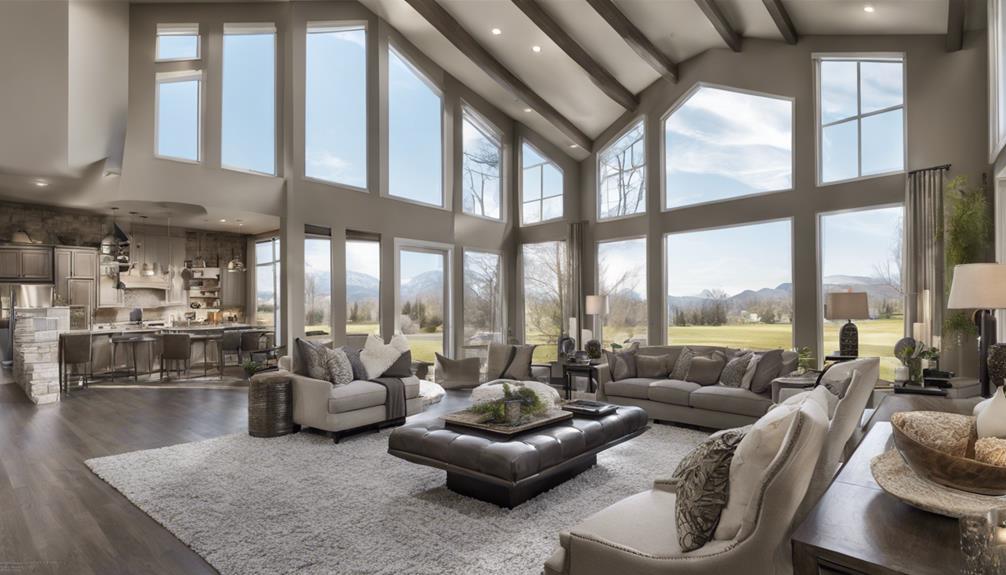
To enhance the natural lighting in your high ranch home, consider adding larger windows to create a brighter and more inviting atmosphere. By increasing the size of your windows, you can allow more sunlight to flood into your living spaces, making them feel more spacious and vibrant. Skylights or light tubes are also excellent options to bring natural light into areas that are typically dark or poorly lit, enhancing the overall brightness of your home.
In addition to larger windows, incorporating glass doors or walls can maximize the flow of natural light and establish a seamless connection between your indoor and outdoor spaces. This not only brightens up your living areas but also creates a sense of openness and expansiveness.
To further enhance the distribution of natural light, consider using light-colored paint and reflective surfaces throughout your high ranch home. Strategic placement of mirrors can also help amplify natural light, making your home feel even more spacious and airy.
Hire Reputable Contractors and Oversee Project

How can we ensure that the contractors we hire for our high ranch home expansion possess the necessary licenses, insurance, and experience? When embarking on additions to our ranch home, selecting the right contractors is crucial for a successful project.
Here are some tips to help us in this process:
- Verify Credentials: Check that the contractors have the required licenses and insurance specific to high ranch home additions.
- Communicate Clearly: Clearly express your vision, budget, and timeline expectations to ensure alignment from the start.
- Regular Oversight: Stay involved and oversee the project progress regularly to guarantee quality workmanship and adherence to plans.
- Address Issues Promptly: Act swiftly to address any concerns or changes that may arise to prevent delays or unexpected costs during the expansion.
- Open Communication: Maintain transparent communication with the contractors throughout the project to foster a collaborative and successful high ranch home expansion.
Frequently Asked Questions
How Do You Expand a High Ranch?
Expanding a high ranch involves strategic planning, considering both vertical and horizontal options. Adding a second floor can double living space and enhance the home's curb appeal. Careful integration of design elements ensures a cohesive look.
Ground-level expansions can also add new bedrooms or living areas while maintaining a single-story appearance. By blending functionality and aesthetics, we create a seamless expansion that complements existing living spaces.
How Do I Make My Ranch Home Bigger?
To make our ranch home bigger, we can consider various options like adding a second story for double the living space or expanding horizontally with new rooms. Enhancing the indoor-outdoor connection by adding a sunroom or utilizing outdoor areas for decks can also increase the living area.
Evaluating our current floor plan is key to identifying the best areas for expansion and improving functionality.
How Do I Add Space to My Ranch House?
Let's expand our ranch house by blending creativity with practicality. We can utilize smart design choices to add space that suits our lifestyle.
By exploring various options like building up for more living space or extending out for additional rooms, we can curate a home that seamlessly merges indoor and outdoor living.
Let's envision a transformation that maximizes our home's potential while enhancing its functionality and aesthetic appeal.
Can You Build up on a High Ranch?
Yes, we can build up on a high ranch home. By adding a second story, we can expand living space, increase functionality, and enhance the home's value.
Vertical expansion offers opportunities for additional bedrooms, bathrooms, or living areas. Assessing the existing structure and foundation is crucial for feasibility.
Building up on a high ranch can transform the home, providing more space and modernizing its design.
Conclusion
Just like a caterpillar transforms into a butterfly, expanding your high ranch home can bring about a beautiful metamorphosis in your living space.
By carefully planning and executing each step, you can unlock the full potential of your home and create a space that truly reflects your needs and preferences. Whether it’s through redesigning interiors, upgrading features, or adding personal touches, every effort contributes to making your home more functional and inviting. For those considering significant changes, such as adding space to a Cape Cod, thoughtful expansion can preserve the charm of the architecture while enhancing its usability. By seamlessly blending design and practicality, you can transform your home into a perfect sanctuary tailored to your lifestyle.
Embrace the journey of expansion and watch as your humble abode spreads its wings and soars to new heights of comfort and functionality.
- About the Author
- Latest Posts
Introducing Ron, the home decor aficionado at ByRetreat, whose passion for creating beautiful and inviting spaces is at the heart of his work. With his deep knowledge of home decor and his innate sense of style, Ron brings a wealth of expertise and a keen eye for detail to the ByRetreat team.
Ron’s love for home decor goes beyond aesthetics; he understands that our surroundings play a significant role in our overall well-being and productivity. With this in mind, Ron is dedicated to transforming remote workspaces into havens of comfort, functionality, and beauty.
Architecture Home Styles
What Sets Bohemian Style Apart From Boho?
Embark on a journey to unravel the distinct nuances between Bohemian style and boho, exploring the captivating elements that define each.
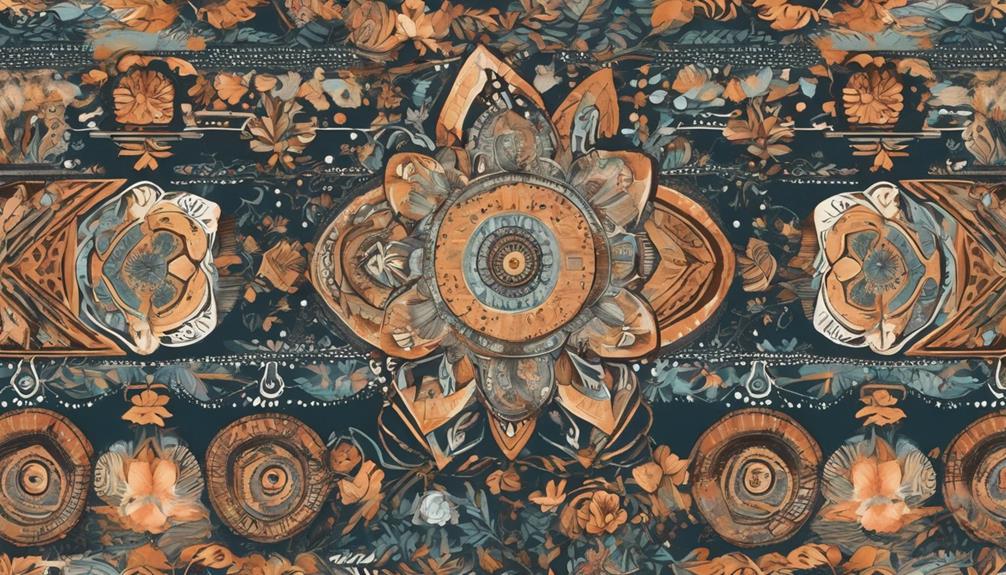
Some argue that Bohemian style and boho can be used interchangeably, however, there are slight differences that set them apart.
The intricate dance between these two styles unveils a tapestry of influences that captivate our senses and spark curiosity.
Let’s explore the underlying elements that set Bohemian style apart from boho, shedding light on the essence of each and how they intertwine to create a unique fashion landscape that continues to evolve.
Key Takeaways
- Bohemian style embodies a carefree, unconventional spirit rooted in creativity and rejection of norms.
- Bohemian fashion features a mix of textures, bold prints, and rich earth tones, appealing to individuality.
- Boho culture blends old with new, reflecting rebellious spirit and counterculture movements.
- Modern boho trends fuse traditional elements with global accents, promoting sustainability through eco-friendly practices.
Origins of Bohemian Style
Originating from a group of nomadic people in Bohemia, the term ‘bohemian’ embodies a spirit of carefree unconventionality and a love for natural elements, shaping the unique and eclectic Bohemian style. This aesthetic traces back to a lifestyle rooted in creativity, freedom, and a rejection of societal norms. Bohemian design elements reflect this ethos by embracing a mix of textures, patterns, and colors that evoke a sense of wanderlust and individuality. The origins of Bohemian style lie in the desire for self-expression through decor, incorporating vintage pieces, natural finishes, and a fusion of cultural influences to create a space that feels lived-in and authentic.
The Bohemian style goes beyond mere decoration; it tells a story through the thoughtful curation of collected trinkets, family heirlooms, and unique artifacts that showcase a person’s journey and experiences. This intentional blending of elements creates a visual tapestry that celebrates diversity and personal expression, making each Bohemian space a reflection of its inhabitant’s soul.
Influences on Boho Aesthetic
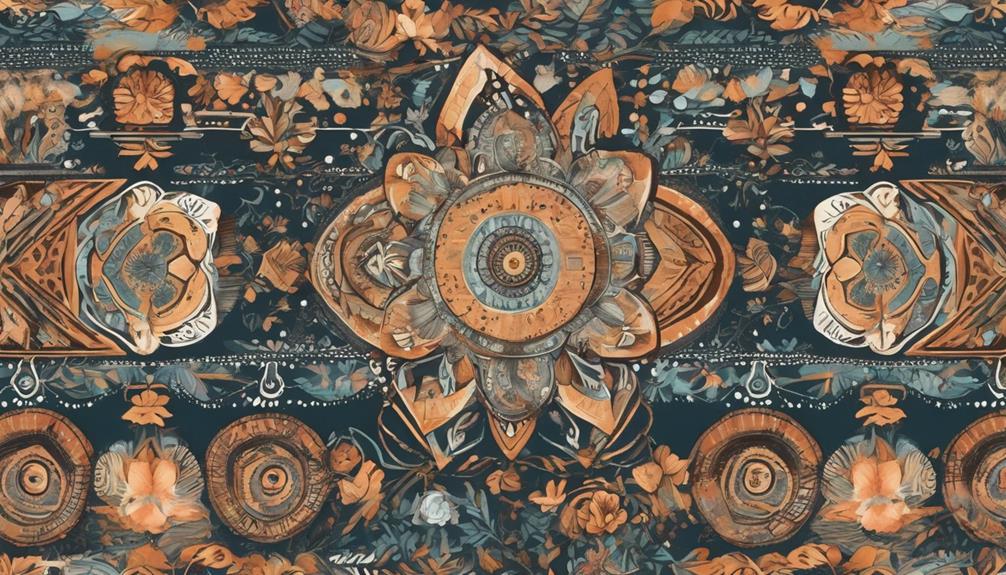
Drawing from the rich history of bohemian culture and artistic movements, the boho aesthetic weaves together a tapestry of influences that reflect a spirit of non-conformity and creative expression.
- Cultural influences: Boho style draws inspiration from diverse cultures worldwide, incorporating elements like Moroccan textiles, Indian prints, and Native American patterns.
- Artistic expression: Influenced by artists and creatives, bohemian aesthetics embrace unconventional art forms, handmade crafts, and DIY elements that add a personal touch to spaces.
- Free-spirited living: Encouraging a sense of liberation, boho design encourages a laid-back lifestyle with an emphasis on relaxation and comfort, mirroring the carefree attitudes of the ’60s and ’70s counterculture movements.
- Nature-inspired motifs: Natural elements like plants, wooden furniture, and earthy tones are prominent in boho design, reflecting a deep connection to nature and a desire for sustainability.
- Vintage and eclectic mix: Incorporating vintage finds, upcycled pieces, and a mix of textures, colors, and patterns, boho style celebrates individuality and the beauty of imperfection.
Key Elements of Bohemian Fashion
Bohemian fashion embodies a harmonious blend of free-spirited creativity, unconventional style choices, and a rich tapestry of textures, patterns, and colors. This style thrives on the unexpected combinations of elements, creating an eclectic and unique aesthetic. Let’s delve into the key elements that define Bohemian Style:
Textures Patterns Colors Mix of soft and rough textures like lace, suede, and knit Bold prints like florals, paisleys, and ethnic motifs Rich earth tones, jewel tones, and vibrant hues
Bohemian fashion revels in the layering of various textures to add depth and visual interest to outfits. Patterns are a crucial aspect of this style, with a preference for intricate designs that reflect a global influence. The color palette in Bohemian fashion is diverse, ranging from warm, earthy tones to vivid, eye-catching colors. By skillfully combining these elements, Bohemian Style achieves a look that is both free-spirited and sophisticated, appealing to those who seek individuality in their fashion choices.
Evolution of Boho Style

As we explore the evolution of Boho style, it becomes evident that its roots in counterculture movements have significantly influenced its development into a modern, eclectic fashion genre.
The term ‘boho’ originated from the French word ‘Bohémien,’ historically associated with gypsies from Bohemia.
Boho culture evolved through the beat generation in the 1950s and hippie culture in the ’60s and ’70s, embracing unconventional lifestyles and artistic expression.
The style broadened to include artists, musicians, actors, and writers living artistically and unconventionally, fostering a sense of freedom and creativity.
Modern boho style is an updated version that marries unconventional boho aesthetics with contemporary design elements, blending the old with the new seamlessly.
Incorporating elements of Bohemian Design, contemporary design, and a mix of unconventional patterns, textures, and colors, modern boho style continues to evolve, reflecting the ever-changing landscape of fashion and design. This dynamic aesthetic thrives on individuality and personal expression, encouraging creativity through the layering of eclectic pieces and rich, globally-inspired details. The difference between traditional and contemporary styles is often highlighted in modern boho spaces, where vintage-inspired elements blend seamlessly with sleek, minimalist designs. This fusion creates a harmonious balance that feels both timeless and fresh, appealing to those who value versatility and artistic flair in their spaces.
Boho Vs. Bohemian: What’s the Difference?
In distinguishing between Boho and Bohemian styles, it is essential to recognize the nuanced differences that set them apart in the realm of fashion and design. Boho style, a more contemporary take on bohemian design, often features a mix of bold colors, patterns, and textures. On the other hand, bohemian style embraces a more eclectic and free-spirited look, focusing on a laid-back, collected aesthetic. To illustrate these disparities, consider the following table:
Aspect Boho Style Bohemian Style Color Palette Bold and vibrant colors Earthy tones mixed with rich, jewel colors Patterns Mix of bold and intricate patterns Paisleys, florals, and ethnic prints Textures Embraces a variety of textures, from smooth to rough Incorporates natural textures like jute, wood, and suede Aesthetic Focus Trendy and modern Relaxed, collected, and timeless Overall Vibe Contemporary and chic Eclectic, free-spirited, and bohemian-inspired
Understanding these distinctions can help in creating a cohesive design, whether for a modern living room or personal style choices.
Cultural Significance in Boho Vs. Bohemian

Culturally speaking, the distinction between Boho and Bohemian styles is rooted in their historical origins and the evolution of their influences on artistic and lifestyle expressions.
- Cultural Significance: Bohemian style draws from the unconventional gypsy lifestyle, reflecting a rebellious spirit against societal norms. In contrast, boho culture encompasses a wider range of artistic individuals, emphasizing creativity and individuality.
- Design Elements: Boho style incorporates a mix of ethnic patterns, bold colors, and contemporary design features, creating a vibrant and eclectic look. On the other hand, Bohemian design focuses on a well-collected, soulful aesthetic with layered textures and vintage elements.
- Bohemian Interiors: Bohemian interiors emphasize comfort and coziness, with a bohemian flair that exudes warmth and character. In contrast, boho interiors often feature a more modern and urban feel, incorporating bold accents and statement pieces.
- Natural Elements: Both styles embrace natural elements, but boho tends to highlight them in a more contemporary and structured way, while Bohemian style integrates them organically, creating a more relaxed and earthy atmosphere.
Contemporary Interpretations of Boho

When exploring contemporary interpretations of boho style, we find a fusion of traditional bohemian elements with modern design trends. This amalgamation showcases a unique blend of bold colors, eclectic patterns, and natural textures in a more refined manner.
Modern Boho Trends
Embracing a fusion of traditional bohemian elements with contemporary design features, modern boho style offers a vibrant and eclectic aesthetic that combines bold colors, textures, and patterns.
- Modern boho trends blend modern furniture with boho accents for a casual yet stylish vibe.
- Bold colors and patterns are mixed with natural materials like wood and rattan to add a rustic touch.
- Ethnic accents such as tribal prints and global elements maintain the bohemian essence in a modern setting.
- Incorporating plants and greenery brings a natural and earthy feel to the interior design.
- Layering textures like macramé, fur, and velvet adds depth and warmth to modern boho spaces.
Fusion of Styles
In the realm of contemporary design, the fusion of eclectic bohemian elements with modern aesthetics creates a dynamic and vibrant style known as modern boho. Modern boho spaces skillfully blend traditional bohemian design elements with sleek lines and minimalist features of modern design.
This fusion results in a visually striking juxtaposition where bold colors, rich textures, and natural materials come together harmoniously. Incorporating global accents and vintage pieces adds layers of depth and history to the space, elevating the overall ambiance.
The key to achieving a successful modern boho look lies in the thoughtful curation of patterns, materials, and cultural influences, creating a personalized and eclectic environment that exudes a laid-back yet refined charm.
Evolving Bohemian Aesthetics
The evolution of bohemian aesthetics in contemporary design manifests through a seamless integration of traditional bohemian elements with modern sensibilities, resulting in a dynamic and eclectic fusion known as modern boho.
- Curated Blend: Modern boho aesthetics focus on a curated blend of vintage pieces, bold patterns, and natural textures.
- Streamlined Furniture: Evolution in bohemian design includes streamlined furniture, clean lines, and a more minimalist approach.
- Urban Influence: Urban boho style incorporates industrial elements, sleek finishes, and a mix of eclectic and contemporary decor.
- Fresh Twist: Contemporary boho interiors showcase a fusion of old-world charm with a fresh, updated twist, appealing to a wider audience.
- Balanced Mix: The modern boho living room combines the warmth of traditional bohemian decor with a minimalist approach and eclectic decor elements.
Sustainability in Bohemian Style

When considering sustainability in bohemian style, we observe a deliberate choice towards eco-friendly materials like repurposed fabrics and natural elements.
Emphasizing thrifting and upcycling, the community strives to minimize its environmental impact through conscious consumption and supporting local artisans.
This sustainable approach not only enhances the uniqueness of bohemian design but also aligns with values of environmental responsibility and ethical sourcing practices.
Eco-Friendly Materials Used
Emphasizing sustainability through the use of eco-friendly materials, bohemian style champions ethical consumption and a greener approach to interior design. In this style, we prioritize incorporating elements like reclaimed wood, bamboo, jute, and organic cotton into our spaces. By opting for these eco-friendly materials, we not only reduce our environmental impact but also promote a more responsible lifestyle.
Vintage pieces play a significant role in boho decor, adding a touch of history and sustainability to our interiors. The focus on natural, renewable, and biodegradable materials aligns perfectly with our eco-friendly principles, ensuring that each choice we make contributes to a healthier environment.
Thrifting and Upcycling
Pioneering a sustainable design ethos, bohemian style enthusiasts actively engage in thrifting and upcycling practices to curate unique and environmentally-conscious living spaces. Thrifting involves scouring thrift stores, flea markets, and vintage shops for pre-loved items, while upcycling transforms old pieces into stylish decor. This sustainable approach not only reduces waste but also adds a personalized touch to bohemian interiors. By embracing thrifting and upcycling, individuals can create one-of-a-kind spaces that reflect their unique style while promoting eco-friendly practices. It’s a creative way to reduce environmental impact and make conscious choices in home decor. Below is a table showcasing the benefits of thrifting and upcycling in bohemian style:
Benefits of Thrifting and Upcycling Reduces waste Promotes sustainability Adds a personalized touch
Minimal Environmental Impact
Incorporating eco-friendly materials like reclaimed wood, bamboo, and organic cotton, bohemian style enthusiasts prioritize minimal environmental impact in their decor choices.
Utilizing upcycling techniques for vintage items reduces waste and adds a unique touch to bohemian design.
Integrating indoor plants not only enhances the aesthetic appeal but also purifies the indoor air for a healthier living environment.
Opting for energy-efficient lighting options, such as LED bulbs, aligns with the eco-conscious principles of bohemian style.
Embracing natural light sources reduces the need for artificial lighting, decreasing energy consumption.
Supporting local artisans and choosing ethically sourced decor items contribute to the sustainable ethos of bohemian design.
Adapting Boho and Bohemian in Fashion

Adapting the essence of boho and bohemian styles in fashion requires a keen eye for blending diverse elements harmoniously to create a unique and expressive look. When incorporating boho-chic and eclectic elements into your wardrobe, consider mixing flowing fabrics with vintage pieces and experimenting with various textures and patterns. Embrace ethnic influences by incorporating cultural patterns and natural materials, such as embroidery or fringe details, to add a bohemian flair to your outfit. To truly embody the spirit of boho and bohemian fashion, celebrate your individuality by accessorizing with statement jewelry, floppy hats, or layers that reflect your free-spirited approach to personal style.
Boho-Chic Eclectic Ethnic Influences Flowing Fabrics Vintage Pieces Cultural Patterns Fringe Details Textures & Patterns Natural Materials
Frequently Asked Questions
What Is the Difference Between Boho and Bohemian?
Bohemian style and boho share similarities but have distinct differences. While boho is a modern term often used to describe a trendy interior design style, bohemian encompasses a broader cultural and artistic movement.
Boho tends to be more curated and focused on current trends, while bohemian embraces a more eclectic and free-spirited approach to design. Understanding these nuances can help us appreciate the unique qualities of both styles.
What Makes a Bohemian Style?
When it comes to defining bohemian style, we find that it’s all about creating a unique and relaxed atmosphere by blending various textures, patterns, and colors. This design approach encourages the use of forgiving and well-collected decor elements, allowing for a visually rich space that feels eclectic and laid-back.
Incorporating natural tones, wood accents, architectural elements, and essential decor pieces like plants and textiles, bohemian style truly stands out for its free-spirited and vibrant aesthetic.
What Are the 5 Types of Bohemian Lifestyle?
When it comes to the 5 types of bohemian lifestyle, there’s a diverse range to explore.
Classic Bohemian offers a mix of vintage and artistic vibes, while Eco Bohemian emphasizes sustainability and nature.
Glam Bohemian adds a touch of luxury to the bohemian mix, and Nomadic Bohemian brings in a sense of freedom and adventure.
Industrial Bohemian rounds out the styles with its unique blend of urban and boho elements.
What Is the Opposite of Boho Style?
When it comes to the opposite of Boho style, simplicity reigns supreme. Clean lines, minimal clutter, and a focus on functionality take center stage. Think sleek furniture, neutral colors, and a more structured look.
Instead of the eclectic mix of patterns, colors, and textures that define Boho, the opposite style tends to lean towards monochromatic schemes and simple patterns. It’s all about prioritizing practicality and a streamlined aesthetic.
Conclusion
In conclusion, while boho and Bohemian styles may share some similarities, it’s essential to recognize the distinct differences that set them apart.
One potential objection could be the misconception that boho and Bohemian are interchangeable terms, but understanding the origins, influences, and key elements of each style reveals their unique characteristics.
By embracing the refined, intentional aesthetic of Bohemian style and appreciating the eclectic, free-spirited nature of boho, we can truly appreciate the beauty and diversity in fashion.
- About the Author
- Latest Posts
Introducing Ron, the home decor aficionado at ByRetreat, whose passion for creating beautiful and inviting spaces is at the heart of his work. With his deep knowledge of home decor and his innate sense of style, Ron brings a wealth of expertise and a keen eye for detail to the ByRetreat team.
Ron’s love for home decor goes beyond aesthetics; he understands that our surroundings play a significant role in our overall well-being and productivity. With this in mind, Ron is dedicated to transforming remote workspaces into havens of comfort, functionality, and beauty.
-

 Vetted2 weeks ago
Vetted2 weeks ago15 Best Drip Irrigation Systems to Keep Your Garden Thriving
-

 Vetted6 days ago
Vetted6 days ago15 Best Sports Laundry Detergents for Keeping Your Activewear Fresh and Clean
-

 Vetted1 week ago
Vetted1 week ago15 Best Tall Toilets for Seniors That Combine Comfort and Safety
-

 Vetted2 weeks ago
Vetted2 weeks ago15 Best Dish Scrubbers to Keep Your Kitchen Sparkling Clean
-

 Beginners Guides3 weeks ago
Beginners Guides3 weeks agoDesigning Your Retreat Center – Essential Tips
-
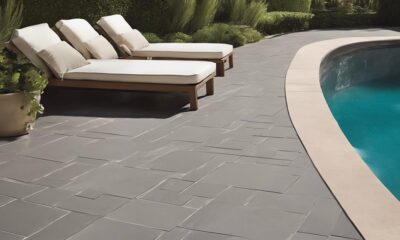
 Vetted4 weeks ago
Vetted4 weeks ago15 Best Tile Adhesives for Outdoor Use – Top Picks for Durable and Weather-Resistant Installations
-

 Beginners Guides4 weeks ago
Beginners Guides4 weeks agoAre Retreats Profitable
-

 Decor2 weeks ago
Decor2 weeks agoWhat Is Eclectic Home Decor






